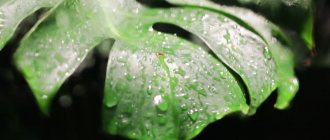You always want to keep a bouquet presented in honor of some significant event for as long as possible, so that it reminds you that someone cares about you and fills the room with fragrance and beauty. Many people have probably heard that you need to add Aspirin for roses to water. This way they can be preserved longer. True, in addition to adding Aspirin to the water, other recommendations must be followed.
Roses can be called royal flowers; they will be a wonderful decoration for any interior, and, of course, the best gift for the woman you love.
Before adding Aspirin to roses to make them last longer, you need to take into account all the nuances, namely:
- proper pruning of stems;
- water quality;
- the material from which the vase is made and its size;
- the place where the bouquet will stand.
Stems should always be cut at an angle. This not only increases the area through which the rose absorbs moisture, but also prevents “clogging” of the plant’s capillaries due to the contact of the horizontal cut with the bottom of the vessel. The stems should be trimmed under water to prevent air from getting into them. This increases the lifespan of the flower in the vessel.
Water quality
How long the roses will stay in the vase directly depends on the quality of the water. Aspirin can improve it, but will not guarantee complete cleansing of impurities. If it is not possible to use distilled water and only tap water is available, it should first be left for at least three hours or filtered, and only then can Aspirin be added to the water for roses.
To make flowers look beautiful and feel good, you need to choose a suitable vessel for them. The size of the vase is selected according to the size of the bouquet. Roses should not be buried up to their buds in it, or, conversely, droop. The optimal vase would be one that would hide 2/3 of the flowers, leaving the most beautiful part of the bouquet visible. It is recommended to carefully cut off all lower leaves, saving only those that will not be hidden under water.
Plastic or metal containers are not suitable for storing bouquets. They can release harmful substances into the water, including from Aspirin (after all, it is an acid). Glass or ceramic vases are ideal for a bouquet of roses.
Useful tips
Aspirin is not a new medicine; it has been used to help plants for quite a long time, so experienced gardeners have already established rules for using this drug, which only increase its effectiveness:
- If there are plans for the preventive use of aspirin solution, then it is better to start “accustoming” the flowers to this as early as possible.
- If the plant’s health is critical, do not be afraid to overdo it with aspirin - it is unlikely that the harm from too high a short-term concentration will be greater than the main danger to the flower.
- You should not prepare the solution in advance - like any other substance, aspirin erodes and loses its properties. It is best to water flowers with freshly prepared medicine. To prepare, you can simply divide the purchased tablets into quarters (remember, dissolve 1/4 of an aspirin tablet in 2 liters of water).
When caring for flowers and indoor plants, it is great to have an inexpensive and accessible product on hand, the search for which will not take much time from gardeners. Of course, aspirin is not a panacea for all plants, it will not increase the yield in the garden, but weekly feeding of home flowers with it will certainly improve their condition. Aspirin is just such a multifunctional drug used in emergency situations, which does not require careful measurements, special skills and abilities, and does not pose a danger to humans and pets.
On the site you will learn secrets that will help you grow and maintain beautiful indoor plants in your home. The articles contain useful information on how to care for plants so that they bloom abundantly in the spring; how to prepare for wintering in October - November and much more. And in the comments you can share your own experience of caring for indoor plants.
How much Aspirin do you need?
Before adding Aspirin to water, it is better to crush it. This way it will dissolve faster. You can grind Aspirin with a rolling pin or in a special mortar. You will need approximately 2-3 standard tablets of acetylsalicylic acid per liter of liquid . First you need to make sure that the Aspirin is completely dissolved in the water, and only then can you put the roses in it. Acetylsalicylic acid disinfects water, preventing rotting processes. Aspirin, as it were, preserves the flower, prolonging its life. As a disinfectant, you can add a shot of vodka to the water.
It is best to place the bouquet in a cool place, protected from drafts and direct sunlight. The optimal temperature for long-term preservation of cut roses is 19-20 degrees, i.e. room temperature.
It is also recommended to change the water in the vase daily, each time adding Aspirin to it again. In this case, it is better to wash the stems and trim them by 1-2 centimeters. This way you can preserve the bouquet for quite a long time. For better nutrition, in addition to Aspirin, you can add sugar to the water. Roses do not tolerate proximity to other plants, so it is not recommended to place them in the same container with other flowers.
Sources:
Vidal : https://www.vidal.ru/drugs/aspirin__1962 GRLS : https://grls.rosminzdrav.ru/Grls_View_v2.aspx?routingGu >
Found a mistake? Select it and press Ctrl + Enter
What needs to be done to make a fresh bouquet of roses last as long as possible, what kind of water do roses like? First of all, as soon as you bring the flowers into the house, you need to let them acclimatize, leaving them on the table in the package for a few minutes. At this time, you can start preparing water for the vase. What can you add to water with roses? The basic and most effective remedies are found in every home in the kitchen or medicine cabinet.
Description of the drug
Today, many people no longer use this drug to reduce fever. And relatively recently there was no alternative to it. Aspirin, or acetylsalicylic acid, is sold in any pharmacy, so there will be no problems finding it. Aspirin for indoor flowers can be used for both treatment and prevention. Not many people know that in addition to the pronounced therapeutic effect, the drug has a number of properties. In particular, this is an excellent folk remedy for revitalizing, stimulating growth and development, as well as for the speedy formation of buds in indoor plants.
How does the aquatic environment affect the plant?
As soon as organic matter (a flower) enters the water, microorganisms begin to multiply in it. The water becomes cloudy and its smell becomes unpleasant. This is a natural process that cannot be stopped, you can only slow it down a little. How to reduce the negative impact of the aquatic environment on a plant, what water to put roses in so that they last longer:
- change the water in the vase daily, washing each stem with your hands;
- Every day, underwater, cut off the end of the stem, which has become soaked and softened by water;
- It is better to pour clean, settled water at room temperature into the vase;
- The leaves of the plant should not float in the water (they will soon begin to rot): if they grow low, they need to be cut off.
Choosing in the store
This information will be useful if you plan to give flowers as a gift, and it is important that they do not fall off or wither in a couple of days. Here are nine recommendations on how to choose a truly fresh bouquet.
- Sepals. They must be green and tightly “hug” the bud. If they are dried out and “sad” (bent away from the bud), then sellers are trying to sell an old flower from which several rows of lower petals have simply been torn off.
- Leaves and petals. They must be “vigorous” and have a bright, characteristic color. Bend the petal down: if it immediately returns to its original position, the flower is fresh. Drooping, darkened leaves/petals, spots, plaque indicate “advanced age” or diseases of the plant.
- Stem. If a flower has been standing in water for a long time, the lower part of the stem will give it away - slippery, with dark spots and an unpleasant putrid odor. In general, the stem should be elastic, without obvious damage, foreign stains or plaque.
- Slice Dark and faded - bad.
- Insects. Examine the bouquet carefully. If you notice any bugs, white coating, dark dry spots, holes in the leaves, cobwebs - do not buy. These are pests. You can bring uninvited guests into your home and infect your indoor plants.
- Aroma. It should be fresh, without any extraneous shades and match the type of flower. Old flowers smell weakly or not at all.
- Pollen. Usually, pollen on the stamens is a sign of a “ripe” flower; it will not last long.
- Water. The liquid in a flowerpot with a bouquet should be clean, transparent, free of foreign odors and impurities.
- The atmosphere in the store. Take a sniff. Among the variety of aromas, you should not feel musty. The room should not be too hot. Humidity is also important—medium is better. Too dry air causes plants to wither, and dampness promotes rot.
These were general points. Here is information on specific types of flowers.
- Roses. Feel the bud at the base of the sepals - in a fresh flower it is dense and elastic. Lightly pull the lower tier of petals, if none of them have “fallen off” - good, the rose is fresh. To make roses last longer, buy unopened or slightly open buds.
- Tulips. Opened inflorescences will not last long. Therefore, only closed elastic buds and no dark, dry areas on the petals. The stem should be elastic.
- Chrysanthemums. The center is black - the flower is old. Tug on the lower petals - they will fall off on an old plant.
- Carnations. A stale carnation will be indicated by a drooping head and faded color. The carnation also has a very fragile trunk - inspect it carefully. Cunning sellers fasten broken stems with matches, toothpicks, needles - look for the joint.
- Lilies. One stem should have one or two flowers and several unopened buds. Look for branches with green buds - the yellow ones will not bloom. There should be no water inside the inflorescences or on the stamens. Wet stamens are a sign of an old flower.
Unscrupulous sellers often “mix” substandard flowers into bouquets of fresh flowers. Ask the florist to collect and arrange a composition from the flowers you have chosen - then you will be sure of the quality of the bouquet.
What should you not put?
Let's look at what you don't need to add to the water to keep your roses fresh:
- Pure alcohol, as well as alcoholic drinks (can cause plant burns).
- Washing gels, liquid detergents and disinfectants (contain a high concentration of aggressive substances and can cause poisoning and death of flowers).
- Sugar in large quantities (more than 1-2 teaspoons): bacteria will multiply faster in an environment that is too sweet.
Regularity of processing indoor flowers
Most flowers require treatment 1-2 times a week. But if the plant is initially watered non-standardly, then the feeding regime with aspirin will have to be adjusted to it.
Plants that need to be watered infrequently require less and healthy watering. But you shouldn’t be too diligent in calculating the amount of the substance that plants receive - acetylsalicylic acid is useful for them, and an overdose is unlikely.
Consequences of incorrect addition of substances
Improper feeding of plants can lead to the following consequences:
- roses begin to fade quickly, the water becomes cloudy the very next day;
- the buds ripen too quickly and bloom prematurely, not having time to gain strength;
- The rose buds remain practically closed, never having had time to open, and the plant itself has already begun to fade.
You can find out when you need to revive roses in a vase with water and how to save flowers if they have begun to fade here.
Thus, there are quite a few ways to extend the life of freshly cut roses at home. First of all, you should prepare the water in advance by disinfecting it with coal, vodka, potassium permanganate or other means.
It is also worth paying attention to the saturation of water with nutrients. For this purpose, you can use vinegar, sugar, citric acid. It should also be noted that, first of all, you should give preference to more natural and less aggressive substances in order to cause minimal harm to delicate roses.
If you find an error, please select a piece of text and press Ctrl+Enter.
How to preserve a bouquet of flowers at home using ammonia and camphor alcohol?
It is also worth adhering to certain rules when preserving bouquets. The fact is that the care for some bouquets differs from standard ones.
How to preserve a bouquet of flowers at home using ammonia and camphor alcohol:
- The worst preserved are prefabricated bouquets, which consist of several types of flowers, plants and decor. It is necessary to disassemble them into their component parts. If this is not possible, then comfortable or ammonia will help prolong the preservation of the bouquet.
- The fact is that these substances help preserve flowers, which consist of a large number of petals. It is best to use these substances to care for bouquets of roses, chrysanthemums and gerberas.
- It is best if the buds in the bouquet are unopened. Ammonia will help achieve the maturity of the bud; it will not dry out even at the initial stage of blooming.
Flower shop
A little history
The rose has been known to man since ancient times. She aroused sincere admiration among the ancient Greeks and Romans. Numerous legends, poems and songs were written about her in the Middle Ages. The monks grew various varieties of roses in their gardens. For many centuries, this flower has symbolized beauty, which is why it is compared to the image of women who were admired.
For gifts, gardeners selected specimens of the best species and puzzled over how to extend the life of roses after they were cut from the bush.
Beneficial properties of salicylic acid
As you know, the benefits of aspirin for plants are expressed in their saturation with vitamin C. In fact, it helps to increase resistance to pests, accelerate seed germination and rooting of cuttings.
Moreover, watering flowers with aspirin produces the following beneficial results:
- stimulation of growth processes;
- revival of drooping shoots;
- increasing the speed of bud appearance;
- intensification of root development processes.
But you need to use the popular remedy wisely, observing the dosage, and only after an accurate “diagnosis”. Otherwise, instead of benefit, harm is possible.
How to cut a rose correctly?
How long the roses will last in the vase depends on the cutting of the flowers. To do this, you should adhere to the following rules:
- First, you need to inspect the flowers growing on the site and select stems whose buds will soon bloom and acquire a color that matches the given variety.
- If you are attracted to densely double roses for cutting, you should look carefully and choose stems on which loose buds grow. They will bloom when they are placed in a vase with water, but tight ones will not, they will droop, and there will be no beauty from such a flower.
- It is recommended to cut three stems from each bush, no more.
- When cutting, the stems should not be deformed, otherwise the vessels that conduct moisture may be damaged.
- For cutting, use pruning shears or a sharply sharpened garden knife.
- It is better to cut roses early in the morning or late in the evening. At this time, plants contain a lot of moisture and nutrients necessary for nutrition.
- It is good to cut roses in cloudy weather, but not in rainy weather, when a lot of moisture gets on the petals. This will quickly deteriorate them.
The Philosopher's Stone or how to extend the life of cut flowers.
How to extend the life of cut flowers. Often flowers received from a loved one quickly lose their appearance, fall off and wither, which greatly spoils our mood. I would like the symbol of love to remind you of the feelings of your loved one for as long as possible.
At all times, men gave flowers to their loved ones, and the question of preserving them always arose. People come up with a huge number of different options using unusual and exotic techniques. Let's try to figure out how effective they are. A list of the most commonly used means by people to extend the life of flowers.
- A weak solution of potassium permanganate.
- Table salt, two tablespoons per liter of water.
- Granulated sugar, two tablespoons per liter of liquid.
- Five tablets of acetyl salicylic acid or aspirin per liter of liquid.
- A glass of vodka.
- One teaspoon of glycerin.
- .Half a teaspoon of citric acid.
- Half a liter of sprite.
- bona forte according to the attached instructions.
- chrysal should be used according to the manufacturer's instructions.
The result is an impressive list. For the purity of the experiment, pour plain water into one vase. We ended up with eleven containers, each with one rose purchased from one manufacturer.
Flowers are taken fresh, only cut, with a half-opened bud on identical stems. We don’t make any special preparations, just cut off the tip of the stem obliquely and place one flower in each solution prepared in advance.
Let's begin monitoring the condition of the plants. First day.
- They passed without any changes, the flowers steadfastly endured all the abuse.
- The first result is that the rose in the saline solution did not survive the abuse. The aspirin solution did not allow the plant to be preserved; the bud began to wither. The sprite has given yellowness to the leaves of the rose standing in it, but the buds are still in order and holding up well.
- Aspirin did not help prolong the life of the flower; the rose withered. The glycerin solution also turned out to be ineffective. The rest of the fighters bravely endure adversity.
- The rose in glycerin has completely withered. The control plant standing in the water disappeared. The plants look no good in a solution of chrysal, sugar and potassium permanganate, but they are not giving up yet.
- A funeral was held for the roses that stood in solutions of chrysal, sugar and potassium permanganate. At the moment, solutions of citric acid and Sprite have proven to be the most effective. A plant kept in water with citric acid looks cheerful, delighting with emerald green leaves and an excellent bud.
- The flowers that supported vitality with solutions of vodka and bona forte died. Life glows only in roses standing in vases with a solution of citric acid and Sprite drink.
- The rose standing in citric acid died.
- A clear favorite has emerged. Withered lower petals of the bud and spots on the leaves do not count. The bud is strong and confidently rests on the stem.
To summarize, we can make a list of the means that are most effective in the fight for the survival of cut plants standing in our vases.
1.
Sprite drink.
2.
Citric acid solution.
3.
Vodka solution.
4-5.
Bona forte store products.
Chrysal divided two positions. 6.
Sugar solution.
7.
Potassium permanganate solution.
8.
Glycerin solution.
9.
Plain water.
10.
Aspirin solution.
11.
Salt solution. Draw your own conclusions. Florist advice - give flowers to your loved ones more often. No matter how long they stand, it is always joy and pleasure.
Preparing a cut rose
How you prepare a rose before placing it in a vase of water determines its lifespan. To extend it you need to do the following:
- First, the packaging is removed from the flower or bouquet.
- The stems are then placed in water for a couple of hours. You can use a bathtub or a large enamel bucket. This is necessary for the plant to absorb moisture. Water should not get on the flowers, otherwise they will rot.
- The next step is trimming the stems. This is done with a disinfected knife without removing the stem from the water. This will prevent air from getting inside. The cutting angle must be sharp.
- The part of the stem that will be immersed in water in the future must be cleared of thorns and leaves. This will prevent them from rotting.
How to save carnations
Carnations are actually long-lived too. If you follow these four recommendations, the flowers will last at least two weeks.
- Slice The stem of the clove is not cut off, but broken off. Then the bottom edge is split.
- Lure. The best nutritional “cocktail” for cloves is a sugar-lemon mixture or aspirin.
- Water level. It should not exceed a quarter of a meter. No more carnations are needed.
- Cold. For greater durability, it is recommended to place the container in the refrigerator daily. Literally for half an hour.
The rules about drafts and spraying also apply to carnations. Change the water strictly daily.
They are reanimated in the same way as chrysanthemums. You can also add a teaspoon of camphor or glycerin to boiling water and place freshly broken stems there. After two to three hours, the bouquet should be moved into a vase with “nutritional” water.
How to prepare water for cut roses?
The quality of water largely determines how long flowers will last in a vase. It is important that cut roses last longer in the form in which they were placed in the vase. Therefore, the composition of water and its temperature play an important role. Numerous observations show that high-quality water extends the life of flowers for a month or more. Roses retain their beauty and even grow a little. Unopened loose buds open. Adult flowers will delight you with their beauty for a long time.
But to achieve this, you need to provide proper care for cut roses. You should start with water. It is better if it is distilled. If this is not possible, you should use well or filtered water. Tap water is not good. First you need to let it sit for several days, then boil it and cool to room temperature.
Bouquet of gerberas
Gerberas have a fragile stem, and the inflorescence is quite large and heavy. You will have to handle the flower as gently as possible. By the way, you can “reinforce” the stem - spirally wrap it with wire along its entire length. And five simple techniques will help keep your bouquet bright and vibrant longer.
- Water level. Maximum 4 cm above the cut. Gerbera stems rot easily, so the water level should not exceed the distance you remove the next time you prune.
- Vase. In low conditions, gerberas will definitely break - the stems simply will not support the weight of the inflorescences. Therefore, the vase should be high enough so that the ends of the stems do not touch the bottom.
- "Desoldering". After each trimming, gerberas should be placed in a bowl of cold water for about an hour. And only after that put the bouquet in the vase.
- Lure. It is more effective to use store-bought formulations, but Aspirin or citric acid will also work. Florists also advise dipping the tip of the stem in salt, and then placing the flower in water.
- Drafts. Gerberas do not tolerate drafts well. Check the room thoroughly for their presence.
By the way, gerberas “love” the cold - throw pieces of ice into the vase, and put the bouquet in the refrigerator overnight.
You can bring fading gerberas back to life, just like chrysanthemums, by “bathing” in boiling water. Then the bouquet is quickly placed in the refrigerator. But keep in mind that such “execution” will not add more than a day to the life of gerberas.
Temperature
Cut roses do not like sudden temperature changes. Therefore, the presented bouquet should not be brought directly from the street into a warm room. Flowers should be gradually accustomed to the new microclimate. They can be placed in the coolest room in the house at first. Only after some time necessary for the flower to adapt indoors can you begin to process the cut.
How to store cut roses at home? To do this, do not place flowers near heaters or fans. They should not be exposed to direct sunlight. They should not be placed on the TV lid or radiator grille. All these sources produce heat, and the flowers have to give up moisture, causing them to dry out.
In order to preserve cut flowers for a longer time, the optimal temperature is eighteen to nineteen degrees Celsius. At night, the flowers will be more comfortable in a cool place; they need to be moved there. Water temperature is affected by seasonality. In summer you can use cool, but not cold water. In winter, roses feel much more comfortable in water at room temperature.
How to keep daffodil flowers fresh?
There are flowers that have a very negative effect on the freshness of the components of the bouquet. Among them are roses and daffodils. These are flowers that need to be removed from the bouquet and placed in a separate container.
How to keep daffodil flowers fresh:
- The fact is that the stems contain a special substance that can have a detrimental effect on other plants. It is necessary to monitor the temperature in the room and under no circumstances place the bouquet on the windowsill.
- Store in warm places, but away from radiators or sun. Very high temperatures contribute to the rapid death of the plant, so in no case should you place the bouquet near the stove, oven or microwave.
- Please note that chrysanthemums and roses really like spraying, unlike tulips and daffodils. It is best not to refresh these flowers with a spray bottle.
Daffodils
What to add to water?
Cut flowers need feeding. What to add to water for cut roses? Good nutrition is sugar with vinegar. They are added at the rate of one tablespoon per liter of water. Flowers live in water with these additives until bacteria appear, which multiply very quickly. As a result, the water becomes unusable and the flowers die. The proliferation of harmful microorganisms is a characteristic process for liquids.
The following remedies will help stop it:
- Aspirin (acetylsalicylic acid): half a tablet for one liter of water.
- Citric acid - use similar to aspirin.
- Alum - a small crystal is thrown directly into a vase of water. This is an antimicrobial agent of natural origin.
- If there is nothing, you can add a few tablespoons of vodka to the water.
When buying roses, you should inquire about the growing conditions. If flowers are exposed to chemicals, for rapid growth, you can add a few drops of bleach to the water with roses, which will replace aspirin. The bouquet will remain unfading for a long time.
What are the benefits of aspirin for plants?
Many people know what effect aspirin has on humans - it is a primitive but effective analgesic. For flowers it plays a slightly different role.
This drug, or more precisely acetylsalicylic acid, is a serious source of substances beneficial to the flower. Naturally, acid has a positive effect on plant growth, helps it bloom magnificently and on time, protects it from many threat factors and generally activates growth - and therefore aesthetic qualities and reproduction potential.
The effect of aspirin solution on indoor flowers:
- Growth stimulation. Under normal and good conditions, the plant will stretch on its own, but there are “capricious” flowers or initially not very healthy specimens - you can even buy a flower with problems.
- More chances for successful reproduction. For all flowers, the use of aspirin has approximately the same effect in reproductive terms - the substance accelerates the work of all processes associated with the ovary and the formation of buds. If you need to propagate a flower faster or the plant does not bloom as planned, then feeding it with aspirin will help correct the situation and improve the quality of the seedlings.
- Preventive protection against pests and disease development. Acid adds substances to the plant, with the help of which it can cope with typical diseases more easily and quickly. Also, its high concentration is antifungal protection and repels most insects.
Thanks to fertilization with aspirin, the plant will bloom and delight with bright colors.
But the most important positive impact is emergency resuscitation. If the flower has not been properly cared for, is in poor condition and is obviously dying - its leaves fall, its stems wither, its petals fade and once green shoots turn yellow, then aspirin may be the only effective remedy that can revive the plant.
Everyday care
A cut flower needs daily care, which consists of the following:
- First you need to select a container. For a bouquet of three to five roses, an oblong vase with a narrow neck is better suited. For stability, the base must be heavy. A wide vase is more suitable for a lush bouquet.
- How to extend the life of roses in a vase? Flowers are best preserved if they are placed in opaque vases. In this case, microbes will not multiply as intensively.
- So much water should be poured into the vase so that the stems are immersed in it by only a third of their length.
- Every day you need to change the water in the vase and add a little nutrients and disinfectants every time.
- How to extend the life of roses? To do this, changing the water, thoroughly wash the vase, rinse the stems and renew the cuts.
- Regular spraying is mandatory. Just be careful not to let water get on the flower petals or inside the buds.
How to preserve a bouquet of lilies longer?
Lilies are very beautiful flowers that have a bright, rich aroma. That is why they should not be placed in the bedroom or children's room, as this can cause headaches or malaise. Before purchasing such a bouquet, pay attention to its condition.
How to preserve a bouquet of lilies longer: .
- If the petals are completely covered with pollen, then the lilies have been in the store for more than one day. Be sure to remove the bouquet from the water and look at the tip of the stems. If they are dark and covered with a slippery coating, this indicates long-term storage.
- The freshness of the bouquet is indicated by a large number of cut leaves or short stems. The store clerk has already trimmed the stem several times to prolong storage. Once purchased, such lilies will not last long.
- If you purchased a fresh bouquet, then you need to try to maintain freshness for a long time. On average, lilies can last about 10 days with proper care. Immediately after purchase, be sure to remove the leaves that are in the water. Using sharp scissors, carefully cut off the stamens and pollen. It is not necessary to remove the antennae themselves. It is best to do this upside down so that pollen does not fall on the stems and leaves.
- After all, it is pollen that takes up a lot of moisture, which causes plants to quickly wither. It is necessary to make an oblique cut as indicated above. Remove the antennae that also end up in the water. Under no circumstances should lilies be placed in a metal vase, as this can cause the flower to deteriorate and oxidize. The ideal option would be dark-colored glass or an opaque vase. A large number of bacteria multiply precisely under the influence of sunlight.
It is imperative to remove leaves that begin to dry out and buds that have faded. Large leaves need to be sprayed, as lilies love moisture, and it is best to transfer the plants from the vase to the bathroom or a bucket of cold water at night. It is necessary to completely immerse the flower, stem and leaves with petals in water. The ideal option would be soft water or rainwater. You can soften the water using a small amount of baking soda. You can throw a silver coin, or charcoal.
Florist shop
What don't roses like?
Cut roses do not like close proximity to other types of flowers. Although some people like different types of bouquets. Roses prefer solitude. While roses that have just been cut from a bush can be revived, weakened flowers cannot. If they have wilted, they can no longer be given their former freshness. You can only improve their appearance a little. How to extend the life of roses? To do this, place the flowers on newspaper and spray their stems well. Then the flower or the entire bouquet is completely wrapped and placed in cool water for three hours. This procedure is carried out at night every day.
Composition of asters + dahlias
If not cared for properly, both asters and dahlias wither rather quickly. Therefore, be careful and follow three simple rules.
- Slice Needs to be updated daily.
- Water. Exceptionally cold, you can throw a few ice cubes into the vase. At night, take the pot out onto the balcony or put it in the refrigerator.
- Lure. These flowers “love” alcohol and sugar. The recipe with vodka is perfect for them. You can also add aspirin to the water.
A standard trick with boiling water will help “cheer up” fading asters and dahlias. But the effect will not last long - about a day. If you add a packet of store-bought nutritional composition to boiling water, your lifespan will increase, but not globally.
Of course, the tips and tricks listed above will not make the bouquet “eternal”, but keeping the flowers in the vase longer will definitely help. The main rule is regular care, because even one missed water change can destroy the plants. If bacteria begin to multiply on the stems, the bouquet can die literally overnight.
Video on the topic
How to make chrysanthemums last a long time?
1: change the water in the vase every day; 2: every 2-3 days, break off the lower ends of the chrysanthemum, thereby refreshing the cut area. The freshness of cut chrysanthemums can be extended by dissolving an aspirin tablet in water (half a tablet per 3 liters of water). 3: spray daily with water from a spray bottle.
Interesting materials:
How long can a citizen of Kazakhstan stay in Russia? How long can citizens of Kazakhstan stay in Georgia? How long can Russian citizens stay in Georgia? How long can Russian citizens stay in Israel? How long can Ukrainian citizens stay in Israel? How long can CIS citizens stay in Moscow without registration? How long can citizens of Azerbaijan stay in Russia without registration 2022? How long can DPR citizens stay in Russia without registration? How long can citizens of Ukraine stay in Russia without registration in 2022? How long can Russian citizens stay in Turkey?










